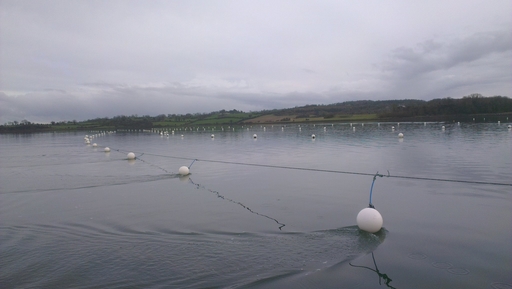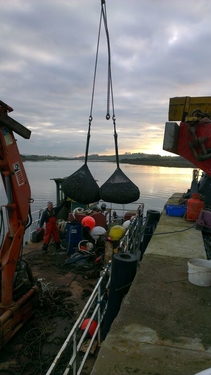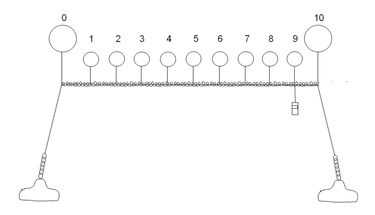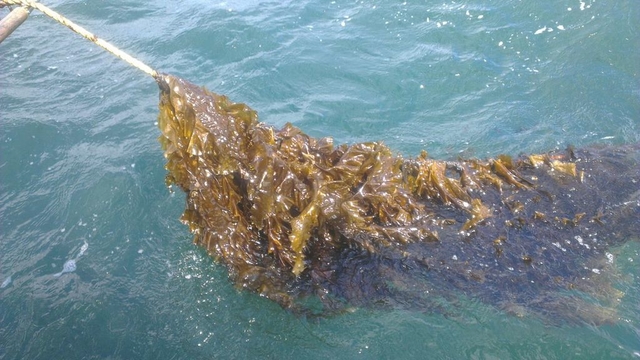Transfer to Longlines and Onward Growth

After spraying onto string, juvenile seaweeds are grown in water baths in the QML hatchery for 4-6 weeks, at a temperature of approx. 10˚C. The plants are called sporophytes at this stage, and will be around 5mm in length. It is at this size that they are ready to be transferred to Strangford Lough for on-growing.
The seeders are carefully removed from their water tanks and stored in cool boxes. They are driven by boat to the longline site. At the site, anchor bags have been put in place ready to attach longline ropes. The anchors used by QML are Kyoto anchor bags (Figure 1) which consist of a mesh filled with local quarry stone. These provide a habitat for animals to live around and within the bags, and are essentially an eco-friendly anchor.

Figure 1: Kyoto anchor bags being loaded onto barge for deployment
Figure 2 shows the basic arrangement of a 100m longline. The anchor bags are connected to buoys 0 and 10 which float on the water surface. Two anchor bags are then connected by the 100m longline rope which lies approximately 1m below the water surface. Buoys 1-9 help to keep this line at a uniform depth. A data logger to record light and temperature is suspended from buoy 9.

Figure 2: Longline arrangement at QML Site. Numbers 0-10 are buoys on surface, with a data logger positioned at buoy 9.
The seeders are hollow in the middle, and this allows the longline rope to easily be passed through. The string at one end of the seeder is cut and attached to the rope, and then by slowly moving the seeder along the rope, the twine will begin to unwind, and be evenly distributed along the longline, giving the juvenile plants maximum space to grow (see video below).
After approximately 6 months, the material will be ready to harvest and will have grown rapidly up to 3-4 metres in length (Figure 3). Heavy lifting equipment and a barge is required to harvest the seaweed at this stage.The seaweed can then be used for its end purpose, which currently at QML is biofuel research. Seaweeds however have many end uses including in food and pharmaceuticals, and this method of growing kelp will work regardless of the end goal.

Figure 3: Saccharina latissima ready to be harvested from the QML Longlines
